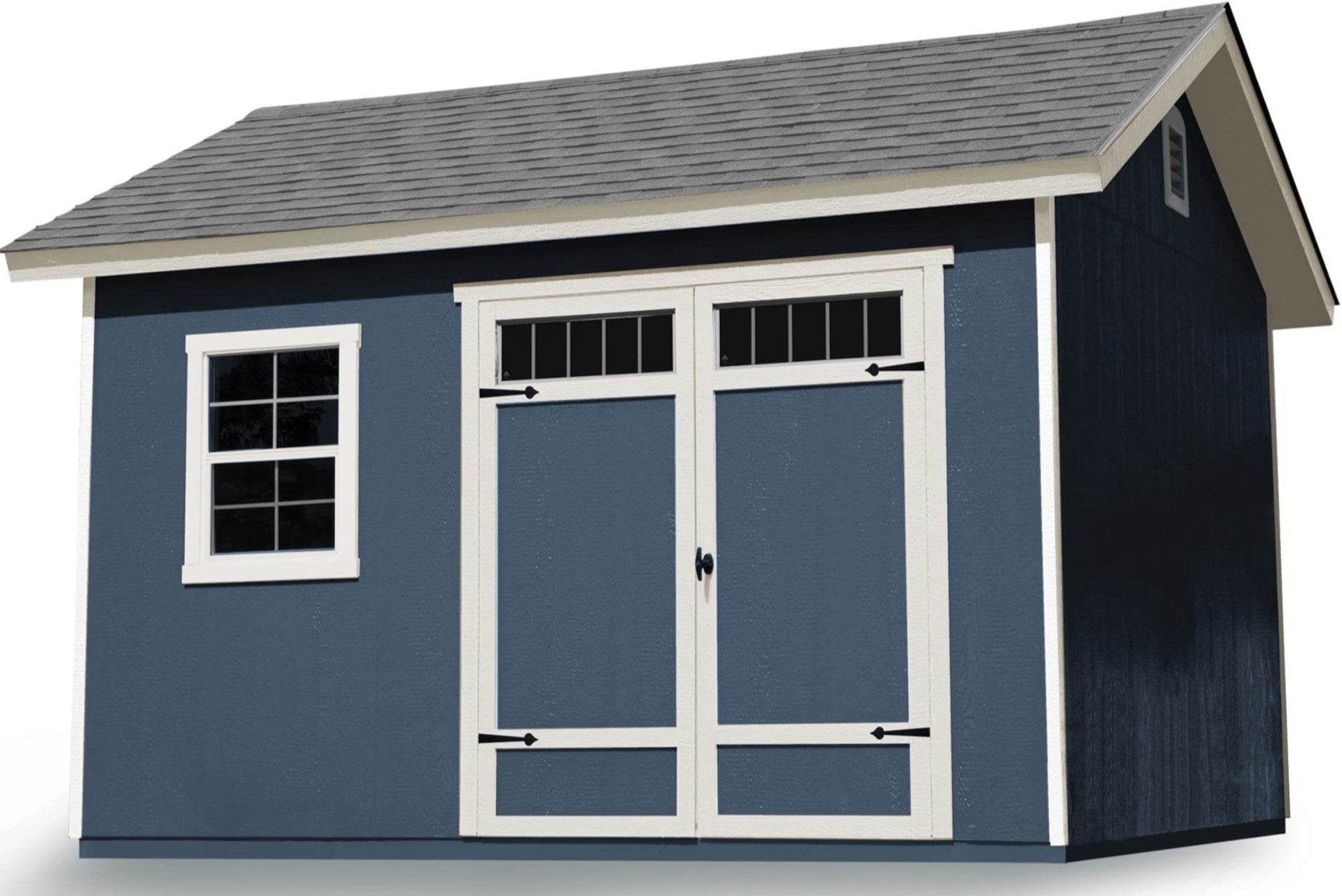Judul : How to Build a 10x12 Pallet Shed: Eco-Friendly and Cost-Effective
link : How to Build a 10x12 Pallet Shed: Eco-Friendly and Cost-Effective
How to Build a 10x12 Pallet Shed: Eco-Friendly and Cost-Effective

Constructing an Eco-Friendly and Cost-Effective 10x12 Pallet Shed
This comprehensive guide details the process of building a 10x12 foot shed utilizing reclaimed pallets, emphasizing environmentally conscious and budget-friendly techniques. This project requires diligent planning, careful material selection, and a systematic approach to construction. While the use of reclaimed materials presents unique challenges, the resulting structure offers a sustainable and economical alternative to traditional shed construction.
Phase 1: Planning and Material Acquisition
The success of this project hinges on meticulous planning. This phase involves determining the shed's location, acquiring necessary permits (where required), and sourcing appropriate materials.
Site Selection and Preparation
Choose a level, well-drained location for your shed. Consider access for delivery of materials and proximity to utilities. Clear the site of vegetation and debris. Mark the 10x12 foot dimensions precisely, using stakes and string lines to ensure a square foundation. Level the ground using a shovel and level, ensuring a firm base for the structure.
Permitting and Regulations
Contact your local building authority to determine if permits are necessary for constructing a shed of this size. Regulations regarding building codes, setbacks, and material specifications vary by location. Obtaining the necessary permits beforehand avoids potential delays and legal complications.
Sourcing and Assessing Pallets
The foundation of this project lies in acquiring suitable pallets. Prioritize pallets constructed from pressure-treated lumber certified for residential use. Inspect each pallet thoroughly for rot, damage, or pest infestation. Avoid pallets showing signs of significant wear or chemical contamination. Aim for pallets of consistent size and construction, facilitating easier assembly. Calculate the approximate number of pallets required based on the shed's dimensions and design. A conservative estimate might suggest 30-40 pallets, but the actual number will depend on pallet size and the chosen construction method.
Additional Materials
Beyond pallets, you will require additional materials, including:
- Concrete blocks or other suitable foundation material.
- Pressure-treated lumber for framing where needed (e.g., door frame, roof supports).
- Roofing material (e.g., corrugated metal, recycled asphalt shingles).
- Fasteners (screws, nails, bolts).
- Exterior-grade paint or sealant (optional, for weather protection).
- Tools (hammer, saw, drill, level, measuring tape, etc.).
Phase 2: Foundation and Frame Construction
A solid foundation is crucial for the longevity and stability of the shed. This phase focuses on creating a level and durable base upon which the pallet structure will be erected.
Foundation Construction
Construct a simple and cost-effective foundation using concrete blocks arranged in a grid pattern according to the shed's dimensions. Ensure the blocks are level and spaced appropriately to support the pallet structure's weight. You may opt for a more elaborate foundation depending on soil conditions and local building codes. Alternative foundation options include compacted gravel or a concrete slab.
Framing the Pallet Walls
Begin by creating the frame for each wall using the reclaimed pallets. Orient the pallets vertically, securing them together using appropriate fasteners. Pay close attention to ensuring the walls are square and plumb. Consider using additional pressure-treated lumber for strengthening the frame and creating a more rigid structure. Pre-assemble the walls on the ground for easier handling during the erection phase.
Door and Window Construction
Designate locations for doors and windows, cutting openings in the pallet walls as needed. Construct the door frame and window frames using pressure-treated lumber for durability. Source salvaged or recycled doors and windows to maintain the eco-friendly approach. Ensure proper sealing to prevent drafts and weather intrusion.
Phase 3: Roof and Exterior Finishing
This phase involves constructing the roof and completing the exterior finishing touches, enhancing both the aesthetics and functionality of the shed.
Roof Construction
Construct the roof frame using pressure-treated lumber. Consider a simple gable or shed roof design. Ensure adequate slope for water runoff. Attach the chosen roofing material, securely fastening it to the frame. Prioritize recycled or sustainable roofing materials, like reclaimed metal or eco-friendly asphalt shingles.
Exterior Finishing
Once the roof is complete, apply an exterior-grade sealant or paint to the pallet walls for weather protection and enhanced aesthetics. This helps to protect the wood from moisture and extend the lifespan of the shed. Consider using environmentally friendly, low-VOC paints or sealants to minimize environmental impact.
Interior Finishing (Optional)
The interior finishing can be tailored to your specific needs. Consider adding shelving, a work surface, or insulation, depending on the intended use of the shed. Utilize reclaimed or recycled materials where possible to maintain consistency with the overall eco-friendly design.
Phase 4: Inspection and Completion
Before declaring the project complete, conduct a thorough inspection to ensure structural integrity and address any outstanding issues.
Structural Integrity Check
Verify the stability of the foundation, walls, and roof. Check for any loose fasteners or structural weaknesses. Address any identified issues promptly, ensuring the shed is safe and durable.
Final Touches
Install any remaining fixtures, such as a door handle, window latches, or ventilation features. Clean up the surrounding area, removing debris and leftover materials.
Constructing a 10x12 pallet shed offers a rewarding experience, combining sustainability with cost savings. By meticulously following these steps and prioritizing environmentally conscious choices, you can create a functional and attractive outdoor structure while minimizing your environmental footprint. Remember to prioritize safety throughout the construction process and consult professional advice when necessary.
thank for reading article How to Build a 10x12 Pallet Shed: Eco-Friendly and Cost-Effective
now you reading How to Build a 10x12 Pallet Shed: Eco-Friendly and Cost-Effective with the link https://shedkinggambrel.blogspot.com/2024/11/how-to-build-10x12-pallet-shed-eco.html
0 Response to "How to Build a 10x12 Pallet Shed: Eco-Friendly and Cost-Effective"
Post a Comment
Note: Only a member of this blog may post a comment.